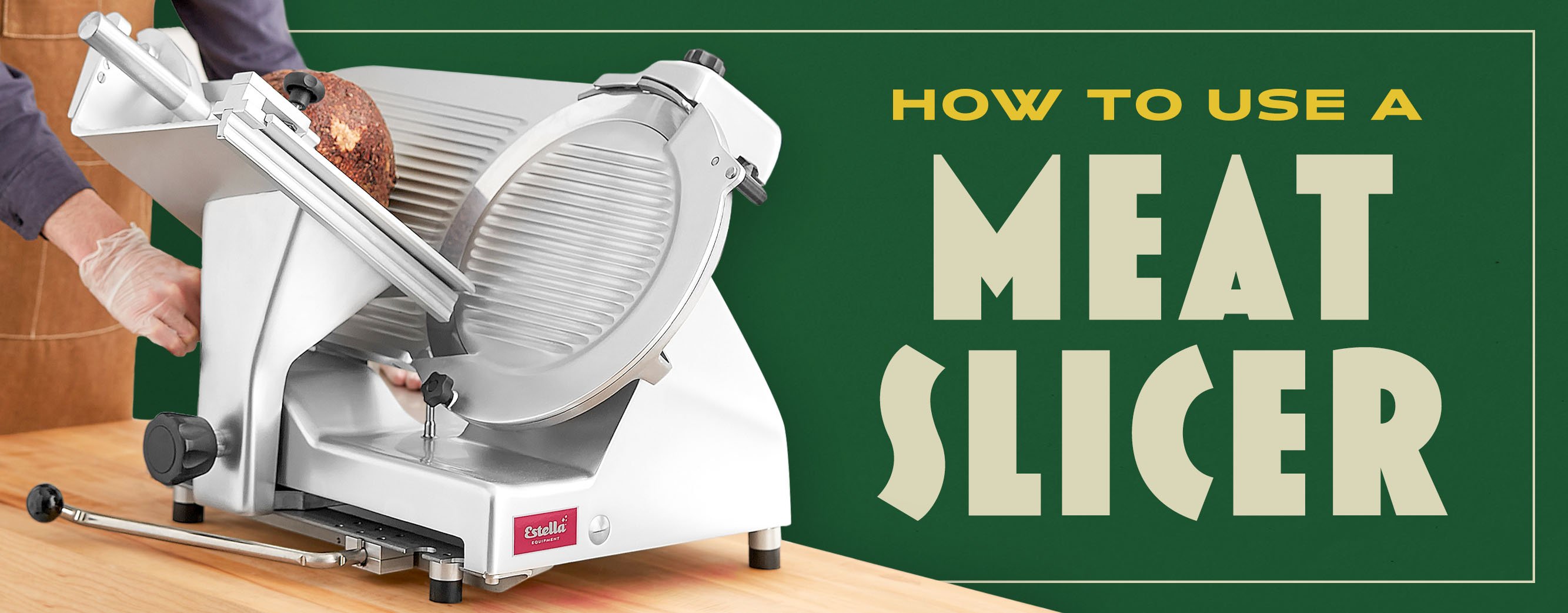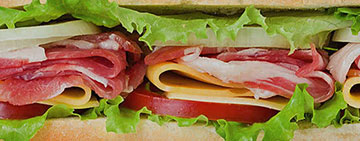
Meat slicers, also called deli slicers, are common appliances found in butcher shops, grocery stores, and sandwich shops. They create uniform slices of meat, cheese, vegetables, and other deli products with speed and precision, allowing you to quickly prepare ingredients and fulfill orders. While they may seem simple to operate, it's essential to make sure you and your staff know how to use a meat slicer correctly. By doing so, you can ensure high-quality slices and avoid the risk of serious workplace injury.
Shop All Meat SlicersTypes of Meat Slice Thicknesses

When using a meat slicer, you must know how to achieve the right meat slice thickness. Thickness plays a significant role in the texture of your slices, and each customer will have different preferences. Additionally, the desired thickness will affect how you use your slicer, impacting the number of slices you make and the time it takes to do so. Consider offering a visual guide for guests at your meat counter outlining slice types to improve their ordering experience. Meat slice thickness can vary from shaved to thick, each lending itself to different culinary uses. We'll outline each slice below:
- Shaved: Shaved slices are less than 1/16" thick, making them paper-thin. These slices are ideal for applications where a light and delicate texture is desired, such as for slicing prosciutto or garnishing.
- Thin: Thin-sliced meat falls between 1/16” and 1/8” in thickness. These slices are slightly more substantial than shaved, offering a bit more bite and texture while remaining relatively thin.
- Medium: Medium-sliced meat, also known as sandwich cut, ranges from 1/8” to 3/16” in thickness. These slices strike a balance between thin and thick, providing a sturdier texture compared to their counterparts. Medium slices are commonly used in sandwiches and wraps.
- Thick: Thick-sliced meat, also referred to as dinner cut, includes any slices greater than 3/16” thick. These slices are substantial and robust, making them suitable for entrees and main dishes.
Meat Slicer Instructions

Using a meat slicer properly ensures the best possible results while slicing foods. Consistent, even slices not only improve the presentation of your offerings but also impact the overall taste and texture of the final product. Follow the steps below to use your meat slicer the right way. Remember that only authorized employees should use a meat slicer, and you should check with your local government to verify labor laws and safety regulations.
- Prioritize safety: Make sure you wear appropriate gear and take proper safety precautions before you start slicing. Use food-safe, cut-resistnat gloves to protect your hands from potential injuries during the slicing process. Never operate the unit with bare hands.
- Place food in the unit: Begin by opening the carriage and placing the food you intend to slice inside. To make even cuts, use the end weight provided with the slicer. Check that everything is in place by verifying the food is positioned correctly, the end weight is secure, and all safety features are engaged.
- Adjust thickness: To set the unit to your desired thickness, locate the adjustable thickness knob on the slicer. On most units, turning the knob counterclockwise will result in larger cuts, while turning it clockwise will result in thinner slices.
- Turn the unit on: Once powered on, the blade will start spinning. Always pay close attention to the blade to promote safe and efficient slicing.
- Start slicing: Working at a consistent pace and pushing the sliding tray forward while cutting will help allow for precision and uniformity in your slices. Make swift, steady cuts and allow the food to fall directly into the receiving area. Do not try to catch the food with your hand as it falls.
- Turn the unit off: Shut off the unit as soon as you finish using it to prevent accidental injuries. Once the slicer is turned off, clean and sanitize the unit. Remove any food particles or residue left behind from slicing meat, and pay close attention to the blade and guard.
Meat Slicer Safety

When operating a meat slicer, safety should always be the top priority. Because of their sharp, spinning blades, these appliances can cause serious injury if they are not used correctly. Keep the following safety tips in mind before using a meat slicer:
- Never operate a meat slicer with bare hands: Wear cut-resistant gloves to protect your hands during operation. Always use a food holder or guard for extra protection.
- Keep your workspace free of clutter: Make sure there are no obstacles that could cause you to trip or lose balance while using the slicer. Additionally, verify that there are no objects that could get caught in the blade.
- Focus on the blade: Avoid distractions and maintain full concentration on the slicing task at hand.
- Never reach across the slicer: If you need to adjust or retrieve something, turn off the slicer and wait for the blade to come to a complete stop before reaching across the machine.
- Lock the blade when not in use: This will prevent accidental contact with the blade and ensure the safety of anyone near the machine.
- Clean with caution: Unplug the machine before cleaning and use proper cleaning tools to avoid injuries. Follow the manufacturer's instructions for cleaning and maintenance to keep the slicer in top condition.
Meat slicers play a pivotal role in a wide range of foodservice settings. Whether you're preparing to-go orders for guests at your deli counter or slicing meat for use on your signature sandwiches, it's essential to educate yourself on how they work. By learning the right way to use a meat slicer, you can achieve professional-looking results that will impress your customers and enhance the quality of your offerings.





